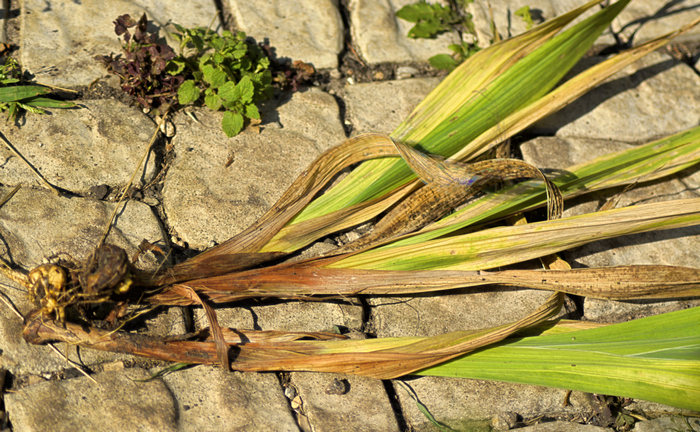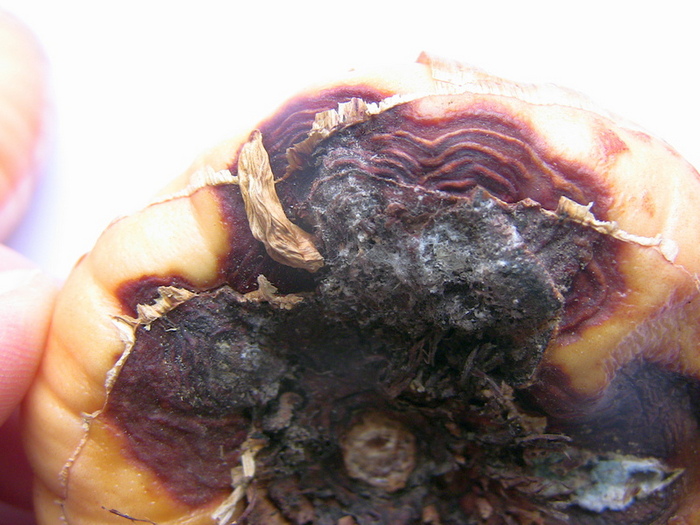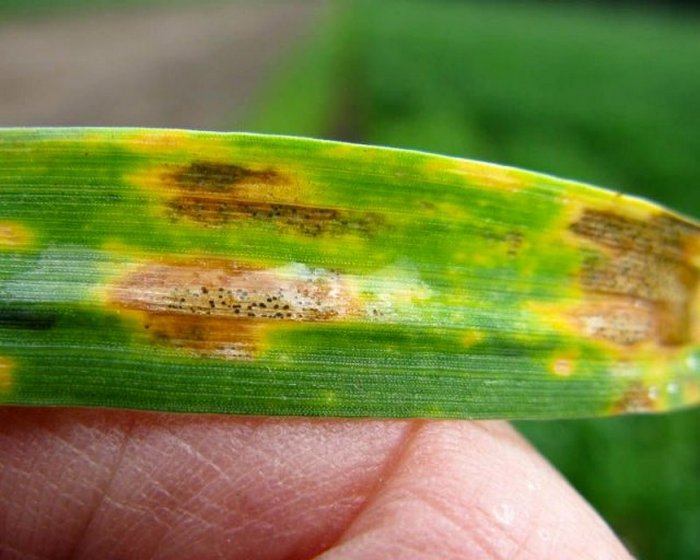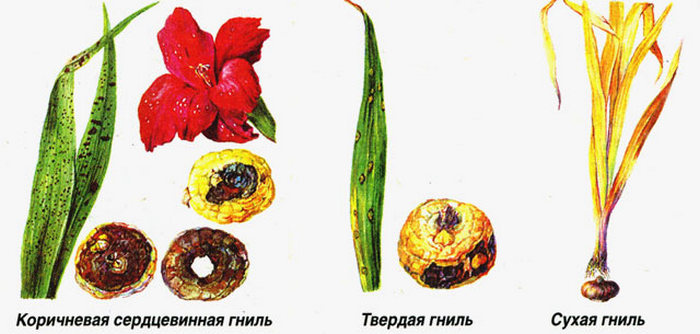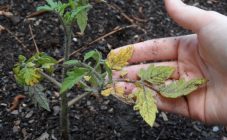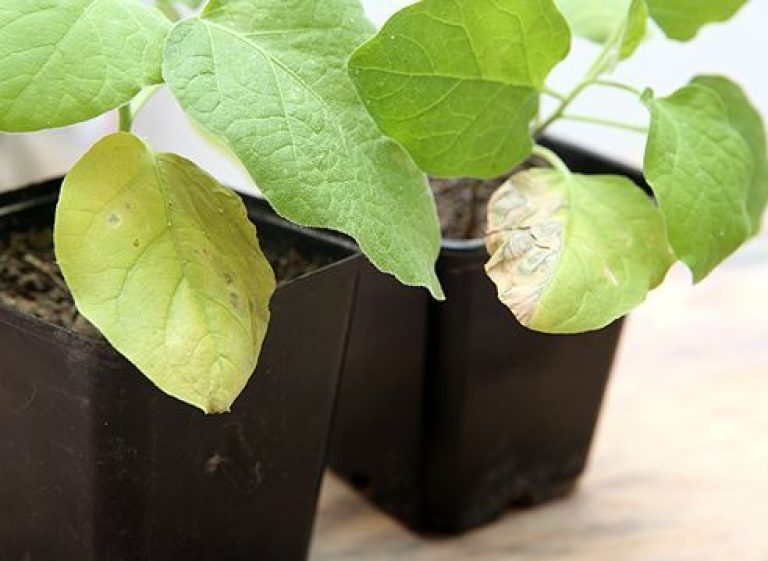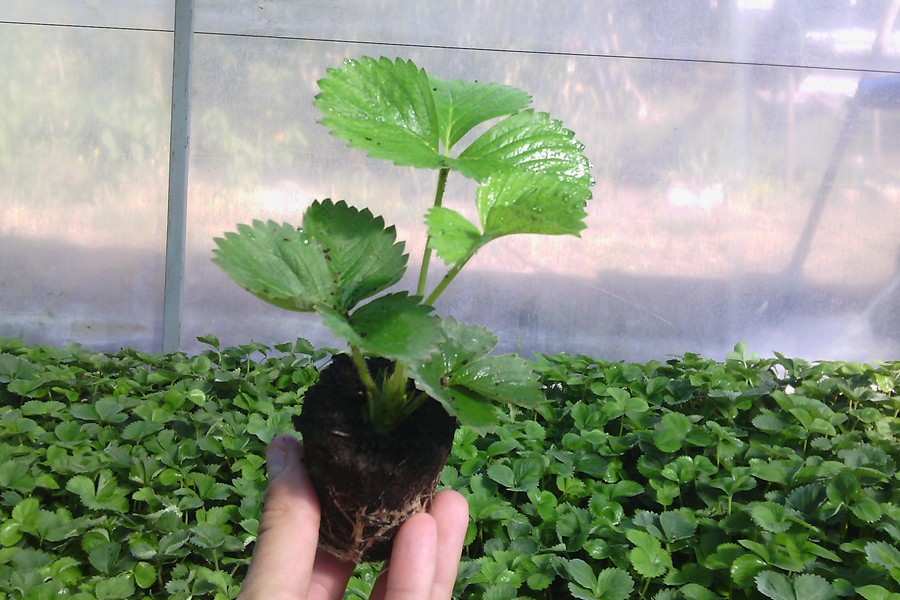Content:
There is no single answer to the question of why the leaves of gladioli dry. This happens for various reasons: yellowness can be caused by excessive feeding, waterlogging of the soil, pests, but most often the leaves turn yellow due to a disease caused by fungal infections. In particular, gray rot and fusarium are especially dangerous for all skewers.
In order to prevent flowers from becoming infected with these diseases, you need to know how to properly care for gladioli.
General rules for the care of gladioli
If you follow the rules for keeping a flower, the likelihood that the plant can get sick and dry out is minimized. There are the following parameters that you should pay attention to when growing gladioli:
- watering frequency;
- regular feeding;
- weeding.
Watering frequency
Flowers are watered several times a week, for 1 m² there is about 10 liters of water. In this case, it is important to prevent moisture from entering the leaves, as this can provoke sunburn and yellowness at the tips of the leaf plates.
Regular feeding
Gladioli should be fed regularly, at least once every 10 days. An approximate feeding schedule is as follows:
- The first feeding is applied when the first 3-4 leaves appear.
- The second time the soil is fertilized when the number of leaves reaches 5-6 pcs.
- The third dressing is applied just before flowering.
Usually, liquid fertilizers are used to fertilize gladioli, but dry fertilizers are also suitable with strict adherence to dosages.
Weeding
The presence of weeds has a bad effect on the development of plants, since the weed draws out the nutrients needed by gladioli from the soil, and therefore they cannot bloom. In addition, slugs grow in the weeds, so it is necessary to weed the beds with gladioli at least 3 times a summer. The abundance of slugs is often the reason why gladioli wither before they even bloom.
Why do gladioli leaves turn yellow
Gladiolus leaves can turn yellow no matter how diligently the flower is looked after. The reason for this is infectious and fungal diseases, as well as numerous pests.
The following diseases are distinguished, as a result of which the leaves of gladioli turn yellow and dry:
- dry rot (fusarium);
- black rot (sclerotinosis);
- gray rot (botrythiasis);
- hard rot (septoria);
- mosaic.
Fusarium
Fusarium (also dry rot) is a disease caused by a fungus. It reproduces in soil, where it can live for 3 to 5 years. An outbreak of fusarium is most often provoked by high humidity of the soil and air, as well as excessive enrichment of the soil with nitrogen or thickening of plants.
Fusarium is dangerous because it does not immediately manifest itself. The action of the fungus becomes noticeable only when the leaves are already beginning to dry and fall off, and the gladiolus did not dissolve the buds in due time. If you dig up the plant, it turns out that its bulbs have begun to turn black and covered with brown spots.
What to do if gladioli turn yellow due to fusarium infection? Unfortunately, it will no longer be possible to help the plant. All that can be done is to dig the ailing flower out of the ground as quickly as possible along with a clod of earth to prevent the spread of the disease to neighboring bushes. It is recommended to disinfect the planting site with a mixture of Tiazon and sand.
Black rot
Black rot (or sclerotinosis) is another fungal disease, the causative agent of which has been living in the earth for more than 10 years. It develops in moist, acidic soil with humus.
In case of defeat by black rot, it is necessary:
- add lime to the soil (only if the soil is acidic);
- spray the flower with Bordeaux solution;
- exclude fertilization with humus.
Gray rot
Gray rot (or botrytosis) is one of the most common reasons why gladioli dry. The spores of the fungus are carried by the wind, so the disease spreads very quickly.
The first signs of the disease are the appearance of tiny spots on the leaves, after which the fungus moves to the stems and petals, causing the process of decay. The result is rotting of the bulb and the death of the flower.
If gray mold is found, it is necessary to immediately get rid of the affected plants.
Solid rot
Hard rot (also septoria) is a fungus that prefers an acidic environment. It is carried by insects and appears as brown spots on the leaves. In the course of the disease, the bulb hardens, as a result of which the gladiolus dries up without blooming.
Mosaic
Mosaic is a virus carried by insects. The presence of the disease is evidenced by the appearance of spots on the leaves and buds of gladiolus. Mosaic leaves quickly turn yellow and the bulbs dry out.
It is impossible to save a diseased plant, therefore, in order to prevent the mosaic from spreading to neighboring bushes, the affected flower is destroyed.
Prevention of leaf diseases in gladioli
In order to reduce the risk of plant disease, you should adhere to the following recommendations for the care of gladiolus:
- The flower must be transplanted periodically, at least once every 3 years. So the plant will hurt less and bloom more abundantly. In addition, if the flowers have been ill with fusarium, then it could remain in the ground, so transplanting will avoid repeated damage.
- In order to protect the plant from fusarium, its bulbs can also be disinfected in a Fundazole solution immediately before planting.
- Systematic weeding is also of great preventive value when caring for flowers, since weeds act as a reservoir of pests and infections.
- As a preventive measure, it is recommended to mulch the soil with pine needles.
- With the onset of spring, all debris must be removed from the beds to ensure a good sanitary condition of the soil.
- In the fall, prepare the soil for planting. To do this, the beds are dug up onto 2 bayonets of the shovel, turning over the layers of soil. This procedure heals the soil, which may contain spores of fungal infections, since they die when deepened.
The yellowing of gladiolus leaves can begin no matter how careful the plant is taken care of. Yes, preventive measures help to minimize the risk of damage to flowers by various diseases, but it is impossible to completely protect them from pests and infections. However, prevention is never superfluous, since it is easier to prevent a disease than to cure it.
